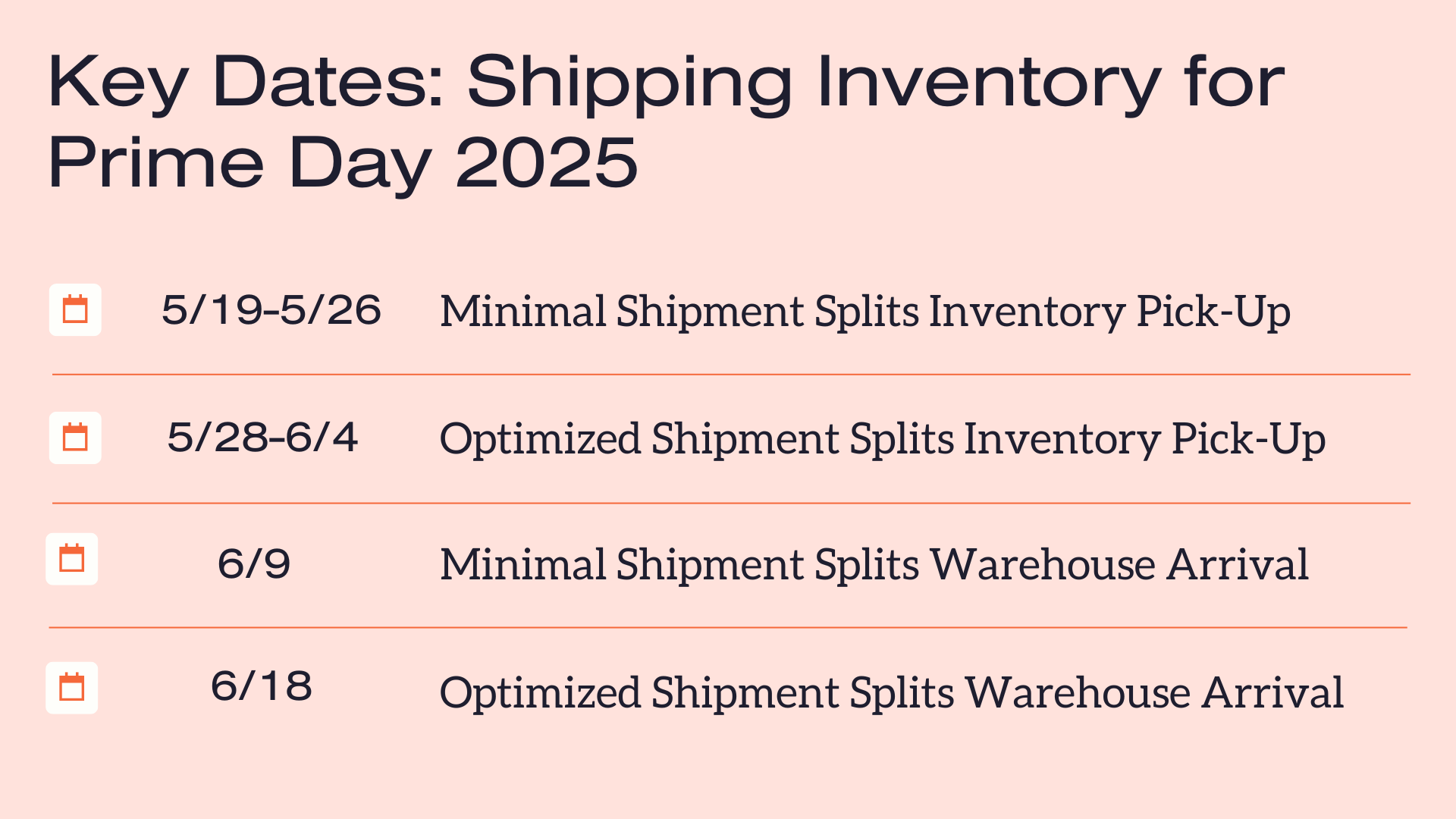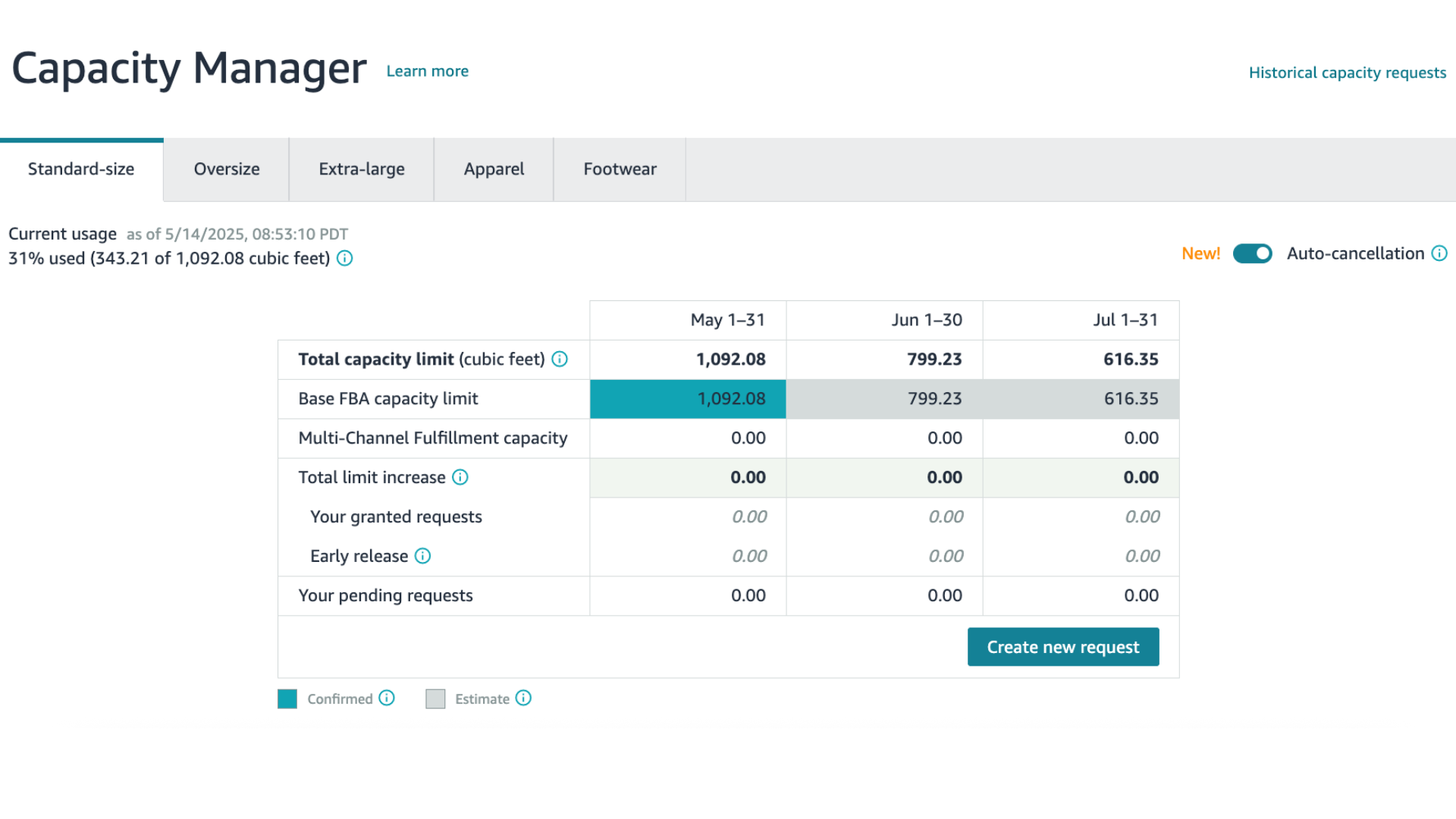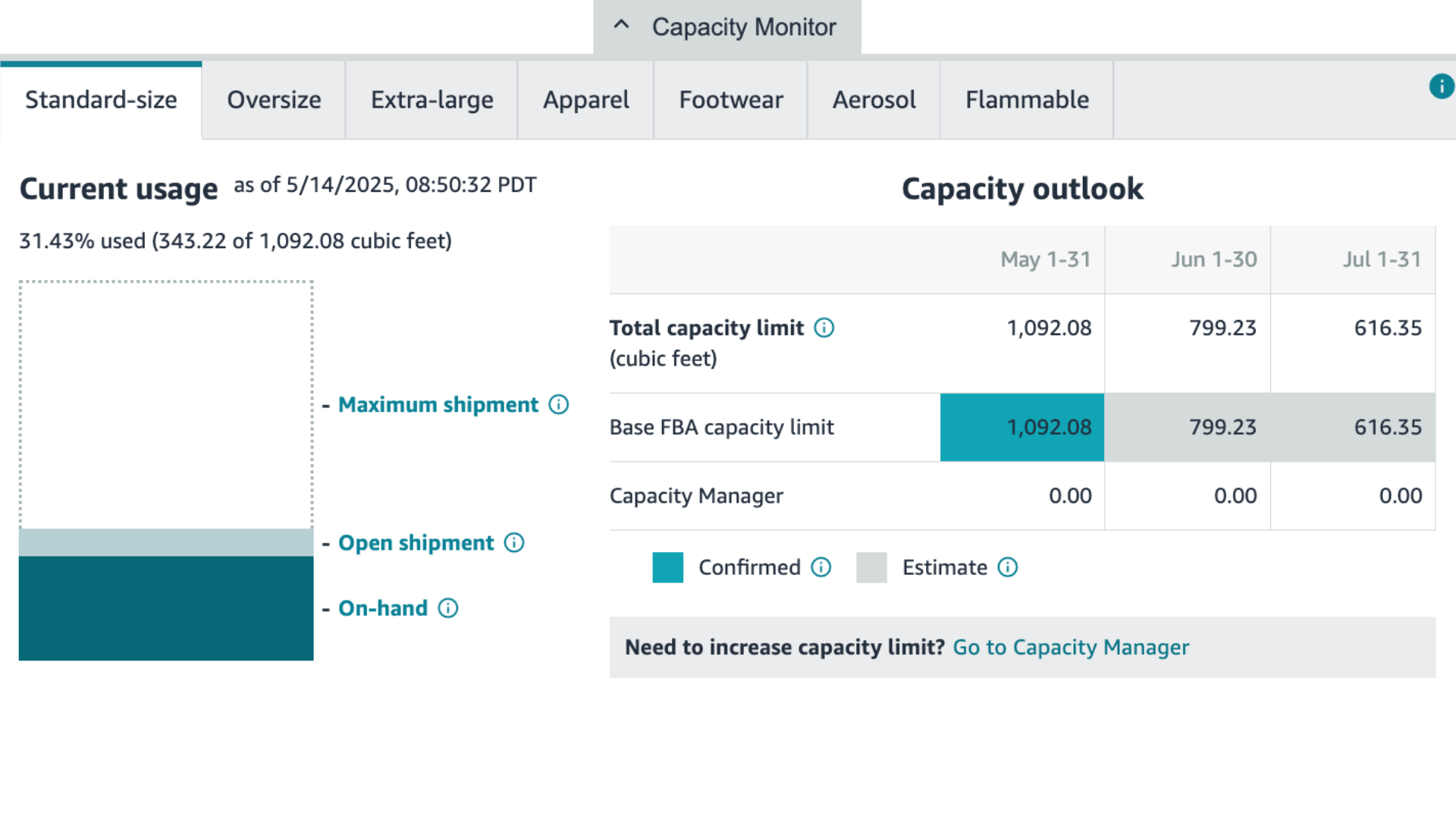Article
Prime Day Inventory Timeline: Optimized vs Minimal Shipment Splits
Prime Day represents one of the most significant sales opportunities of the year for brands on Amazon. In 2024 alone, independent sellers sold over 200 million items during the 48-hour period. To capitalize on this massive influx of Amazon shoppers, meticulous inventory planning is not just recommended — it’s essential. Without proper inventory planning, your brand could miss out on reaching new Amazon customers and potentially generating record-breaking sales.
As your trusted Amazon agency partner, we’ve developed this guide to ensure your inventory is positioned for Prime Day success. Let’s dive into the key shipping dates, different Amazon FBA shipment split options, and other best practices you need to know.
Prime Day Inventory Management Timeline
Getting your inventory to Amazon’s fulfillment centers on time is paramount to ensuring your deals are live and products are available to eager shoppers. Missing these deadlines can mean missing out on significant sales. Here is a timeline that covers the crucial Prime Day inventory management dates:
- June 9, 2025: Deadline for FBA shipments with the “minimal shipment splits” option selected to arrive at Amazon’s facilities.
- June 18, 2025: Deadline for FBA shipments with the “Amazon-optimized shipment splits” option selected to arrive at Amazon’s facilities.
- For sellers utilizing the Amazon Partnered Carrier program: Ensure your inventory is ready for pickup no later than 14 days prior to the dates listed above to account for transportation time, and ideally at least 21 days prior to assure routing and shipments go smoothly. With Prime Day especially, there is no reason to cut it close – plus, storage fees are still low (versus Q4 where they are much more expensive). This means planning for pickups between May 19-26, 2025 (for minimal splits) and May 28-June 4, 2025 (for optimized shipment splits).
Amazon FBA Shipment Splits: Minimal vs. Optimized
There are two primary options when you send your Fulfillment by Amazon (FBA) inventory: minimal shipment splits and Amazon-optimized shipment splits. Understanding the difference is important for making the right choice for your business.
- Amazon Minimal Shipment Splits: Inventory is spread between regions to reach customers efficiently but potentially adding to overall transit times.
- Amazon-Optimized Shipment Splits: Products are placed in fulfillment centers based on where customers typically order from, aiming to reduce overall costs and delivery times.
The real reason for minimal vs optimized splits is not usually about getting more product close to consumers (both shipment splits will do that to some degree), but rather the number of shipments that need to be prepared. Amazon optimized splits, in particular, will usually result in shipments to more locations – but this also means that the brand has to prep more shipments in advance. With Prime Day shipping deadlines approaching fast, your Amazon brand needs to determine which shipment splits to use, if not chosen already.
Shipment Splits for Amazon Prime Day Inventory
For Prime Day, we generally recommend Amazon-optimized shipment splits. While it requires more upfront planning and potentially shipping to multiple destinations, it aligns better with Amazon’s goal of faster delivery and can ultimately lead to lower FBA costs and quicker delivery speeds to shoppers. However, if your supply chain has very tight lead times or you prefer a simpler initial shipping process, the minimal shipment splits option is available – just make your inventory arrives at Amazon by the earlier June 9th deadline if using this option.
The Box-Level Inventory Placement program can also simplify multi-destination shipping plans for small-parcel deliveries and might make sense for your brand. Get tailored help with Prime Day inventory management from our logistics experts.
Best Practices for Prime Day Inventory Management
Beyond understanding the Prime Day inventory timeline and shipment split options, consider these additional best practices:
- Forecast Demand Early and Accurately: Leverage your historical sales data and anticipated Prime Day deal performance to determine the right inventory levels. Remember that Prime Day can also lead to a dip in sales both before and after the event.
- Account for Lead Times: The expected time between shipment (order) creation and sellable – Factor in the time it takes to pack shipments along with the estimated inbound transit time to Amazon’s fulfillment centers. Use the Prime Day inventory timeline we included earlier in this article to ensure proper time management ahead of the event.
- Utilize Amazon’s Tools: Take advantage of tools like the Capacity Monitor (bottom of page) and Capacity Manager to track your storage limits and potentially request additional capacity for fast-selling products.
- Send FBA Shipments Early: Don’t aim for the deadline; ship early whenever possible. This provides a buffer for any potential delays in your supply chain.
- Proper Packaging Prep & Tracking: Apply the proper FNSKU labels to each item to assist with tracking your Amazon FBA inventory. Ensure products are ready for shipment by following the Amazon packaging and prep requirements.
- Consider Amazon Warehousing and Distribution (AWD): For long-term bulk storage and automatic inventory replenishment to Amazon FBA, explore the AWD program. Inventory in AWD does not count towards your FBA capacity limits.
Conclusion: Preparing Your Amazon Prime Day Inventory
Prime Day offers a tremendous opportunity to boost brand visibility and sales on Amazon. However, success hinges on meticulous planning, especially when it comes to your inventory timeline and overall management. Ensure products arrive at Amazon’s fulfillment centers on time and are ready to meet the surge in customer demand by:
- Knowing the timeline of key Prime Day inventory deadlines
- Understanding the nuances of minimal vs optimized shipment splits
- Leveraging Amazon’s inventory management tools for FBA sellers
Don’t let inventory management become a hurdle for your brand this Prime Day. If you need expert guidance in forecasting, shipment planning, or navigating Amazon FBA, our team is here to help. Contact us today for a logistics consultation to ensure your brand is fully prepared to make the most of Prime Day!


